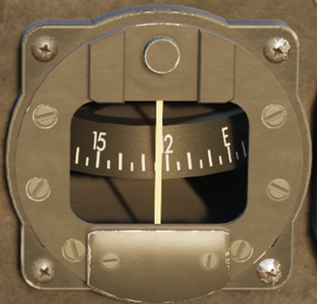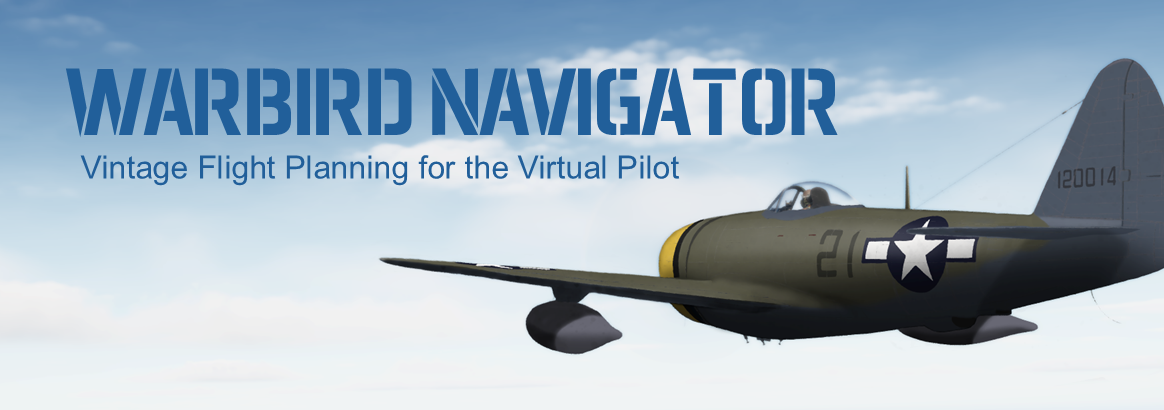
The magnetic compass is usually situated in the center panel of any WW2 warbird cockpit. It displays the airplane's orientation relative to the Earth's magnetic field by a number between 0° and 359° (360° being equal to 0°, due magnetic North) - in what is called the Magnetic Heading (HDG). 090° on the compass is magnetic East, 180° is South and 270° is West, etc.
Other frequent terms of direction used in aviation are: Flight Course (CRS, CUS) – the intended and planned path of your flight; the Flight Track (TRK, =Path) – the actual path your aircraft has flown over the ground; the Bearing – the direction an object or landmark is viewed from your position. All of these directions can be given in degrees as read from the compass, say 017°.
Note that the compass in most simulator warbirds moves with some latency and therefore needs to settle for a couple of seconds before reliable readings can be made; all the while the aircraft should be in stable level flight and with well-trimmed elevator, ailerons and rudder!
A common problem with the common "drum-type" magnetic compass shown above is to easily get confused with the changes in heading you need to take in order to set a specific course given by the flight plan or a radio command. It is turning in a counter-intuitive way. Say, you are flying a heading of 124° as indicated on the compass above and you want to change your heading to 168°. Do you need to bank left or right to get to 168°? Left? Wrong! The compass will turn the other way. As a rule of thumb, change heading like this: „If the number needs to increase, turn right – if it needs to go down, turn left.“ For changing the heading to 168°, the numbers need to increase, so you need to turn right. Try this on your next flight!
Later models of WW2 warbirds therefore often had a directional compass, rather than a drum-type compass (see below). On such a compass the desired heading could be set using a dial below the gauge and the aircraft was then steered in a way as to get the magnetic needle between the two guiding rails of the dial. Turning the aircraft in the correct direction was much more intuitive with such a compass. They were used, for example, on the P-51 Mustang, the F4U Corsair or the F4F Hellcat.

The compass is consulted by the pilot several times during the flight, even though experienced pilots will reference another navigation device – the directional gyro (see above) – more often during flight, the magnetic compass serves the important purpose of calibrating the directional gyro several times per hour during the flight.
Take note that the magnetic compass only shows the direction relative to the magnetic field, therefore it is called the magnetic heading. In order to fly a certain course or heading relative to the geographic North - the true heading - pilots need to convert between the two directions by correcting for magnetic variation, that is the difference between the two - and yes, this is modeled in MSFS2024, DCS and IL2 BOS!
